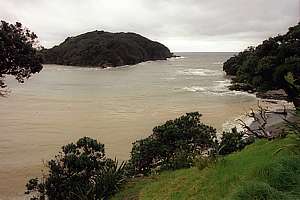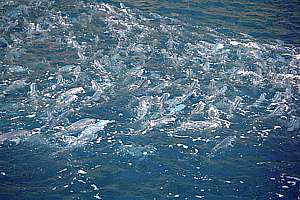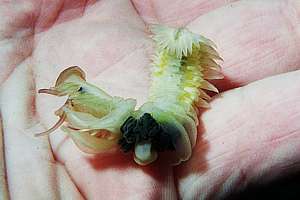 |
 |
| The second 50 visual examples of degradation, beginning with various aspects of plankton blooms |
For comments, corrections or suggestins, please e-mail
the author Dr Floor Anthoni.
Note! for best printed results, set your page up with
a left margin of 1.5cm (0.3") and right margin of 1.0cm (0.2")
-- Seafriends home -- issues
index -- Rev 20041210,
 |
 |
 |
 |
 |
 |
 |
 |
 |
 |
 |
 |
 |
 |
 |
 |
 |
 |
 |
 |
 |
 |
 |
 |
 In the most degraded of all habitats, one often sees strange sponges, as if these do not belong in New Zealand. |
 |
 |
 |

f017315: a trove of golden golfball sponges (Tethyia aurantium) is being cleaned by a single sea cucumber (Stichopus mollis) (1998) However, in 2002 these rocks proved to be barren. The end of a habitat. Near Martins Bay, Hauraki Gulf. |
 |
 |
 |
 |
 |
 |
 |
 |
 |

f036114: Brachiopod lamp shells on a rocky wall are a sign of health, particularly when several year classes can be distinguished as on this photo. Whangamumu Hr near Cape Brett. |

f025912: dead Brachiopod lamp shells on a vertical wall. In the Goat Island marine reserve nearly every vertical wall that is turned away from the light, used to be covered in these but they have all disappeared. Notice the very few small red lampshells. Near Leigh 2000. |
 |
 |
 |
 |
 |
 |
 |
 |
 |
 |